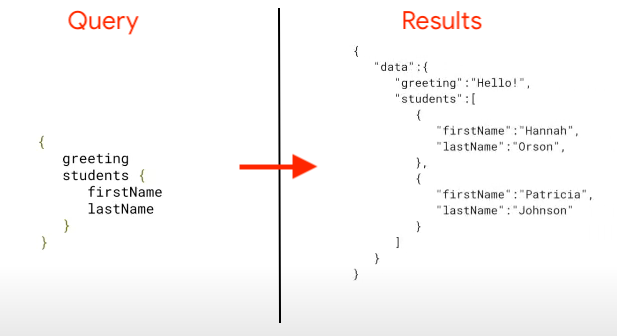本頁內容適用於 Apigee 和 Apigee Hybrid。
查看
Apigee Edge 說明文件。
![]()
在設計階段,您會定義 API 的需求。API 設計人員會規劃要向消費者公開的服務,並設計用來存取這些服務的 API。您可以建立下列任一文件,記錄 API 需求:
- OpenAPI 文件
- GraphQL 結構定義
以下各節將詳細說明 OpenAPI 和 GraphQL 文件,以及這些文件在 API 生命週期中扮演的角色。如要比較這兩種 API 設計選項,請參閱這篇網誌文章,瞭解 REST 和 GraphQL 的比較結果。
什麼是 OpenAPI 規範?

「OpenAPI Initiative (OAI) 致力於根據 Swagger 規範,建立、發展及推廣與供應商無關的 API 說明格式。」如要進一步瞭解 OpenAPI 計畫,請前往 https://openapis.org。
OpenAPI 文件會使用標準格式說明 RESTful API。OpenAPI 文件採用 JSON 或 YAML 格式,可供機器讀取,但人類也能輕鬆閱讀及理解。OpenAPI 規格可正式說明 API 的元素,例如基本路徑、路徑和動詞、標頭、查詢參數、內容類型、回應模型等。此外,OpenAPI 文件通常用於產生 API 說明文件。
以下是 OpenAPI 文件中的片段,說明 Apigee 的簡單 Hello World 範例。如需更多資訊,請前往 GitHub 查看 OpenAPI 規格。
openapi: 3.0.0
info:
description: OpenAPI Specification for the Apigee mock target service endpoint.
version: 1.0.0
title: Mock Target API
paths:
/:
get:
summary: View personalized greeting
operationId: View a personalized greeting
description: View a personalized greeting for the specified or guest user.
parameters:
- name: user
in: query
description: Your user name.
required: false
schema:
type: string
responses:
"200":
description: Success
/help:
get:
summary: Get help
operationId: Get help
description: View help information about available resources in HTML format.
responses:
"200":
description: Success
...
網路上有許多關於 OpenAPI 規格的優質資訊來源。建議您先前往 OpenAPI Initiative 網站,瞭解相關總覽、部落格文章,以及 OpenAPI 規範的連結。如需結構定義元素和資料類型的詳細說明,請參閱規格。
您可以從 OpenAPI 規格存放區下載多個 JSON 和 YAML 範例 OpenAPI 文件。
什麼是 GraphQL 結構定義?
GraphQL 結構定義會說明 API 中可供用戶端查詢的資料。
使用 GraphQL 的優點包括:
- 單一端點可存取特定作業的所有欄位
- 強大的查詢語言 (稱為結構定義語言) 可讓您存取所需資料,避免過度擷取或擷取不足
- 平行處理查詢
如要進一步瞭解 GraphQL,請參閱 graphql.org。
以下範例說明 GraphQL 結構定義,其中定義了資料輸入點 (查詢類型)、可用的寫入作業 (變動類型) 和資料類型。
type Query {
Greeting: String
students: [Student]
}
type Mutation {
createStudent(firstName: String!, lastName: String!): Student!
}
type Subscription {
newStudent: Student!
}
type Student {
Id: ID!
firstName: String!
lastName: String!
password: String!
collegeId: String!
}
您可以查詢 GraphQL 結構定義,以 JSON 酬載的形式傳回所需資料。

如果我修改文件,會怎麼樣?
在整個 API 生命週期中,每個 OpenAPI 或 GraphQL 文件都是可靠來源。在 API 生命週期的每個階段 (從開發、發布到監控),您都會使用同一份文件。
編輯或刪除文件會對後續作業造成影響:
- 如果您編輯文件,必須手動編輯相關構件,包括 API 代理程式和公開資源的任何 API 產品,並重新產生 API 參考說明文件,以反映文件中實作的變更。
- 如果刪除文件,您必須手動刪除相關構件 (包括 API Proxy),並編輯所有 API 產品來刪除相關資源,然後重新產生 API 參考說明文件,反映文件和資源的移除作業。
使用 OpenAPI 文件建立 API Proxy 時會發生什麼事?
您可以從 OpenAPI 文件建立 API Proxy。只要按幾下滑鼠,系統就會自動產生路徑、參數、條件流程和目標端點,建立 API 代理。然後新增 OAuth 安全性、頻率限制和快取等功能。
您可以使用「建立 Proxy 精靈」,從 OpenAPI 文件建立 API Proxy,詳情請參閱「使用 OpenAPI 規格產生 Proxy」。如要親身體驗,請逐步完成「使用 OpenAPI 規格建立 API Proxy」教學課程。
發布 API 時,您會取得 OpenAPI 文件的快照,用來產生 API 參考說明文件。該快照代表說明文件的特定修訂版本。

